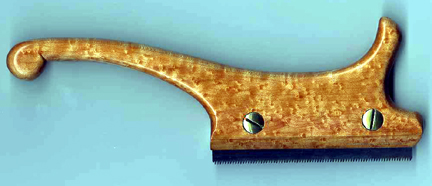Saws
I love handsaws of all types. Looking at the many types and examples of
antique handsaws has always intrigued me. So many that I have seen were so rare
or one-of-a-kind that I realized the only way I could ever hope to own one would
be to make it for myself. In most cases the saws that I have made utilized the
blades, saw nuts and medallions from existing saws that were, in most cases,
beyond their useful lives.
Bow saws
Iíve been interested in traditional bow saws. I found a nice plan on the
internet (courtesy of another fellow Galoot, Paul Womack a.k.a. "BugBear")
and tried my hand at it. It worked so well that I thought it would be nice to
make another scaled down version to replace my junkie "nickel ninety eight"
coping saw.
These saws were included in a recent issue of Fine Woodworking called "Tool
and Shops" (issue #153) in the "Current Work" column. I guess that will be
counted as my lifeís "fifteen seconds of fame"!
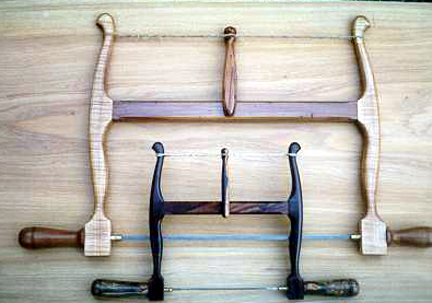
Here is another small saw based on a different design. Notice
the "radiused joints" used where the arms and stretcher connect. This allows the
arms to correct their positions as the tension is increased (relative to where
the shoulders of the tenons meet the sawís arms). Itís quite an improvement over
flat shoulders.

Handsaws
After seeing some very interesting handsaws (that were way out of my price
range) I decided to build some for myself. Itís really a pretty straightforward
process. The hardest part is finding an old saw that can be used as the "donor"
for the blade and saw nuts. I guess you could also use a new saw but I donít
think it would turn out looking as nice.
The pattern for the saw shown below was taken from an antique backsaw. The
donor was an old Disston D23 that had been almost used up. You can still see the
original etch (on the other side of the blade). I even filed a "nib" in the
blade but it doesnít show up too well in this picture. I used cocobolo wood for
the handle.
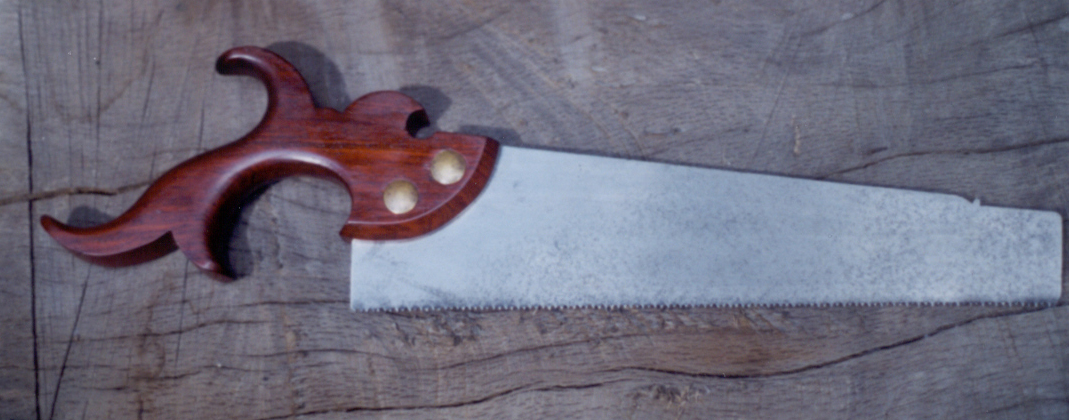
Here are a couple of saws that were made as close copies from
some old catalogs. The upper saw is a Disston "Turkish Saw" while the lower is a
copy of a compass saw that was offered by the English firm of Spear & Jackson.
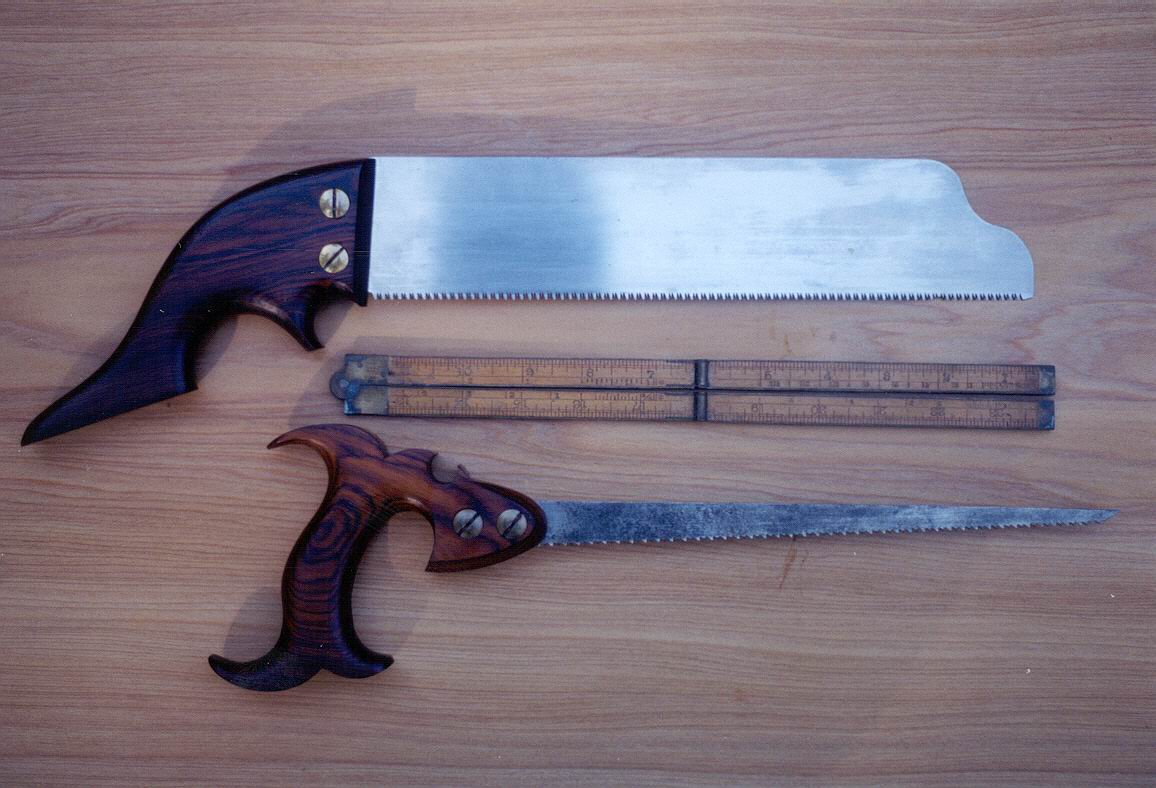
Ever hear of an "Overhand Rip" saw? No? Well here is my
version of one:
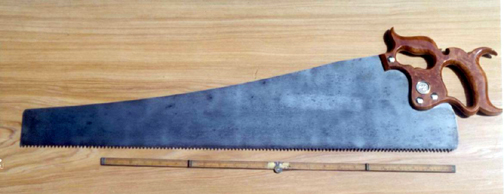
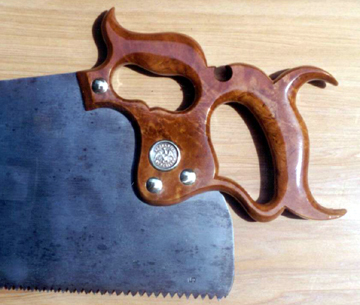
This was inspired by a reprint of an old J. Flint & Co.
(Rochester, N.Y.) catalog I saw. I thought it was one of the "coolest" I had
ever seen and decided to try to make one like it. The handle is made of curly
cherry that I cut myself.
Backsaws
A small, 6" backsaw. Itís a copy of one made originally by
Groves & Sons. This one still needs to have its teeth cut (the blade is actually
a thin card scraper). The handle is made from some exceptionally figured
Kingswood. I was able to incorporate some of the creamy sapwood into the horn.
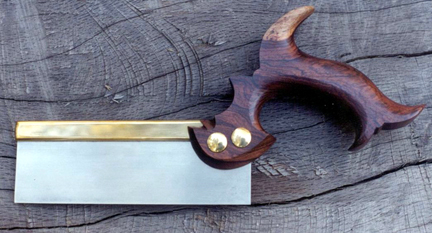
"Combination" saws
A "combination saw" (rip teeth on one edge and crosscut teeth
on the other Ė plus an adjustable back!) that has an interesting "gun blue"
finish where the typical etch is done as a negative. The etch reads "E.C.
Simmons", I suspect that it was actually made by Bishop. When I purchased this
saw the handle was badly broken beyond repair. I took the opportunity to make a
new handle of my own design using some interestingly figured rosewood.

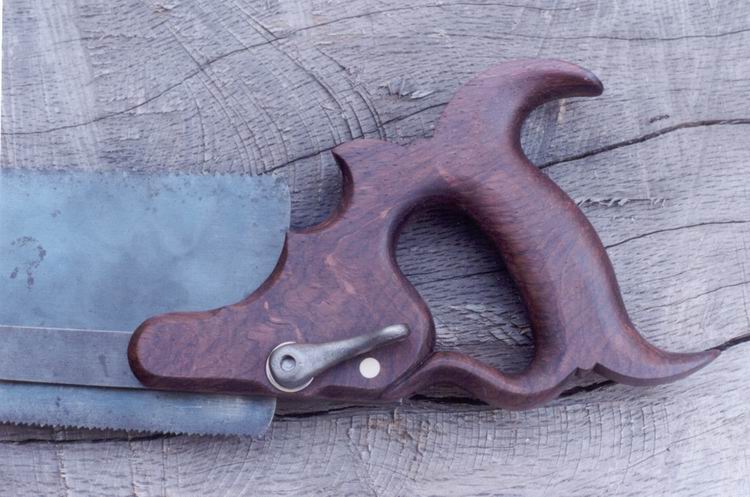
Another combination saw. This is my own design. Unlike the
Bishop saw above this one does not have the adjustable back. The handle is
symmetrical so you donít need to remove and flip the blade over when going from
rip to crosscut (or vise versa). Just loosen the toggle and adjust the handle to
a comfortable sawing angle. (As you will notice I had not yet finished filing
the teeth when I scanned this image).
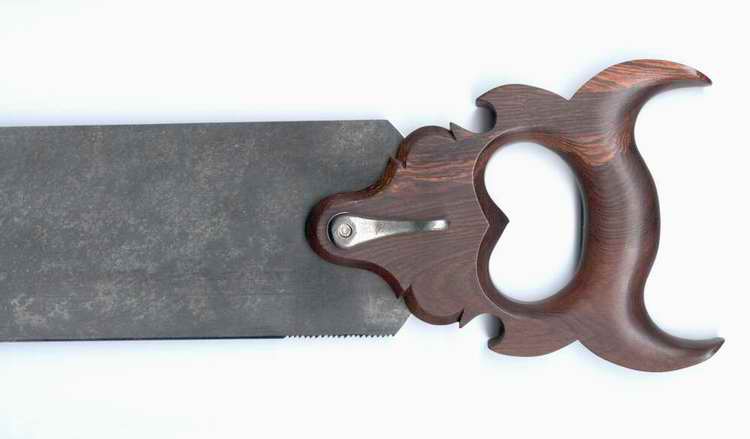
Stair saws
Originally designed for carpenters that specialized in building
staircases these types of saws were used to cut the dados for the stair treads.
Itís a useful tool for any type of saw cut that has a defined depth. The blade
can be made to project to the desired kerf depth by loosening the screws that
hold it tight into the body. I use mine for cutting sliding dovetail sockets and
sawing the shoulders of tenons for "breadboard" ends of tabletops.
This particular saw was made from a tracing of an original saw
graciously provided to me by Louis Michaud. The wood is Kingswood.
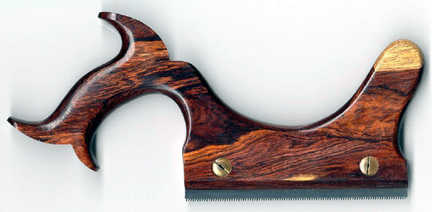
Here is another stair saw that is a copy of an original that I
once saw. It is made of Birdseye Maple.
